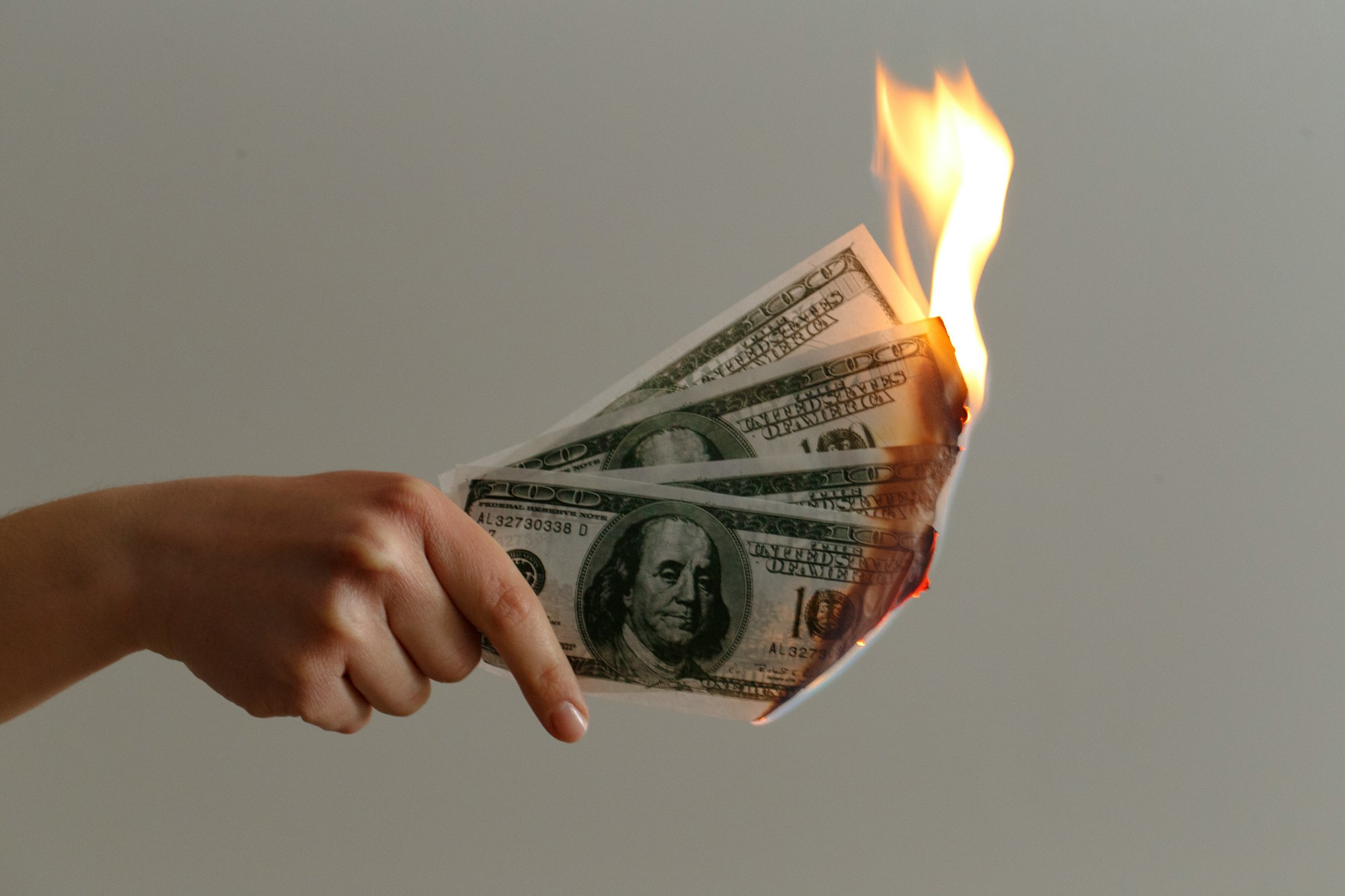What is Crypto Short Squeeze & How to Avoid It in Day Trading?

The Meaning of Short Squeeze
Day traders can be trapped in a short squeeze situation if the volume of buy orders increases because short sellers are cutting their losses in lieu of a sudden price surge. With retail purchases suddenly increasing, the market naturally spikes and incurs massive losses for short orders. The situation is an indicator of how many short sellers coincidentally decided to reduce their losses by buying back what they owed regardless of the prevailing trend.
What Happens Behind the Scenes?
Coincidentally, a correction or a retest was taken advantage of by many traders. What they thought was an imminent market decline turned out to be a short-lived price movement. When a reversal comes, sometimes aided by a fundamental factor, the price of the asset suddenly surges. In these scenarios, short positions have to be covered or repaid immediately to avoid further losses.
Shorting is an effective trading strategy to take advantage of the market decline. By borrowing an asset at its prevailing price (hopefully higher than its future price), the trader can then buy the asset at a discounted price when the downtrend arrives. The acquired assets will then be repaid to the platform or exchange. Therefore, shorting requires a decline in price before the day trader makes a profit.
When the cryptocurrency's price finally begins to climb, though, problems occur for short traders. Rising prices will compel short sellers to cover their positions by purchasing the asset at a higher price. Most traders probably have their exchanges programmed to automatically place buy orders up to certain limits. Once the price rises over a particular threshold, most short positions are immediately closed off, leading to a sharp price increase. Manually closing positions by repurchasing the assets is another option to stop the bleeding, so to speak.
Now short sellers have to repay their positions by placing buy orders, which leads to a surge of buying pressure that drives prices higher. One way this might happen is through stop-loss triggers or liquidations (for margin and futures contracts). This may occur when traders sell their holdings voluntarily to prevent further losses.
With a rapid uptrend and a massive volume of buy orders, more traders will ride the mooning crypto. The situation worsens every time the buying pressure gets stronger, as new investors come in and more short orders are paid off. Aptly coined as the “Short Squeeze,” it literally squeezes many traders to accept their losses.
Reasons Why a Short Squeeze Could Occur
Experienced traders open short positions when they believe a price drop is about to happen. However, fundamental factors could come into play that will shatter market expectations, such as new developments, inadvertent promotions from celebrities, announcements from the founders, or future adoptions of famous brands.
It's possible that this upsurge will last for a short while. If not, the losses at stake might snowball as the positions' maturity date approaches. When the crypto price reaches a certain amount, the exchange or broker will require short traders to return what they owe, including the interest. Some brokerages also set limits on short positions to ensure that the trader can cover them in case the price goes up.
So, to prevent further losses, short sellers often choose to liquidate (buy) their holdings quickly, increasing the uptrend pressure in the equation.
Example of Short Squeeze
Many asset types, such as crypto, stocks, and forex, especially those with massive leverage, suffer from a short squeeze. With fairly slight changes in price levels, large positions can suffer more damage. Thus, Bitcoin markets commonly experience both short and extended squeezes. If you want to avoid participating in such situations, you need to think very carefully about the amount of borrowed crypto you are utilizing. Implementing an effective risk management system is recommended to avoid draining your trading funds when shorting crypto.
Probably one of the best examples of a short squeeze in crypto happened in early 2019, when Bitcoin price experienced a sustained downtrend. Short traders are anticipating an imminent dip after a precipitous price decrease. The mood on the market was probably fairly pessimistic, with many traders seeking short positions to take advantage of the downtrend's continuance. However, the price found support in a narrow Bollinger Band, which triggered a sharp reversal.
The price quickly broke through expectations, and the territory didn't even experience a retest for quite some time. It wasn't until the global pandemic (or "Black Thursday") that the price range was tested again. The massive volume of buy orders from short sellers became one of the factors behind this sudden price surge.
Another short squeeze example was in July of 2021. At the time, Bitcoin was performing very poorly during the previous months. Therefore, the market sentiment became gloomy, sending the volume of short positions to increase at a record pace. After the support level was broken on the 20th of July, many traders were expecting the price to hover around the 20K mark. But they were proven wrong by the crypto short squeeze.
The market sentiment was fairly clear that Bitcoin's price would experience a sustained downtrend. Instead, the number one crypto suddenly spiked on July 25, 2021, surging from $36,000 to around $40,000 within an hour. The majority of the pouring buy orders came from Binance and Bybit, which caused short positions to be automatically liquidated. As for the short position with high leverage.
Can you profit from an impending short squeeze?
Speculators and investors who disagree with the current fundamental factors may decide to purchase the asset that many others are shorting in order to profit from a bear squeeze. A sudden increase in the value of cryptocurrencies may seem appealing, but it also comes with some serious dangers. The coin could be extensively shorted due to fundamental causes, including a poor market outlook or a cyber attack.
Active traders will keep an eye on the most heavily shorted cryptocurrencies, waiting for them to start a price rally. If the price shows signs of gathering momentum, the trader may decide to buy in anticipation of a possible short squeeze and subsequent large upward price movement.
Risk Management Tactics to Avoid a Short Squeeze Scenario
There are several ways to avoid being trapped in a short squeeze situation – or at least lessen your losses when the house goes down.
- First, you can set a strategic stop-loss level (in this case, a limit for buy orders). By doing so, you can minimize your losses if/when a short squeeze happens. For instance, if you're looking to buy a cryptocurrency that’s about to experience a significant drop, you can set a limit to your buy orders of around a certain amount. Depending on your strategies, you have to set a strategic percentage that will allow you to buy the asset once the price hits that level, which prevents further losses.
- Second, you can go long if you feel a bit doubtful about the current market trend. In this case, you can buy the asset at its current price and wait for the surge price. This strategy can offset your losses in case a price spike happens. Another option is to buy derivatives to profit from the rising prices.
- Third, you have to look for the red flags before a short squeeze.
Signs that a short squeeze is about to happen?
Day traders are able to spot early signs of a short squeeze by weighing in on the overall market pulse, fundamental indicators, and contrarian signals. With such knowledge, traders can close a position earlier before suffering losses. In some cases, reading the signs can also help to further take advantage of a real shorting opportunity by re-entering the position.
Short squeeze activities usually happen rapidly due to the stop-loss levels triggered by the sudden price surge. Fortunately, experienced traders can spot tell-tale signs of an impending short squeeze.
I. Strong Buying Pressure
For no apparent reason, you may see that the asset has accumulated a massive number of buy orders. When this happens, you might be missing or a short squeeze is about to happen.
II. Increased Short Interest
You can gauge the number of outstanding shorted assets by looking at the percentage of the crypto’s “short interest”. This is a useful insight to avoid a short squeeze because anything above 20 percent may signal an impending surge.
III. Number of Days to Buy Back Shorts
By looking at the trading volume of a highly shorted crypto, you’re able to determine the average number of days to cover the outstanding amount of shorted assets. The short ratio is particularly useful because you can set the limit to ten days before the volume of outstanding shorted assets should be covered. If it exceeds that limit, it might be a good decision to exit as soon as possible.
IV. Indicator for Overselling
Using the RSI indicator (Relative Strength Index), you can measure the prevailing buying pressure in the market. Reading the RSI level of the asset will help you predict the occurrence of a short squeeze. For example, the low RSI is attributed to overselling, making the price of crypto drop. With a sudden spike, the RSI increases and indicates an overbought condition, a possible short squeeze scenario.
A Word of Caution for Short Traders
If an asset is experiencing a large influx of short positions, it becomes more risky because a sudden shift in market sentiment can trigger a short squeeze. When such a phenomenon happens, more traders and investors flock into the market to take advantage of the sudden surge. FOMO is in full swing and buying pressure further stimulates the crypto price. The result: traders with short positions are forced to buy at a high price to pay for their borrowed assets. Even worse, some traders don’t have a buy order limit in place, which might sink their position deep into the abyss as prices continue to rise.
A short squeeze is a quick and easy way to lose trading capital, especially when you hold high-leveraged positions. While leveraged trading promises high returns, it also exposes inexperienced traders to unprecedented risks. Therefore, trading small caps when shorting crypto is recommended to minimize losses.
It’s important to analyze your trades and trading performance to prevent emotional trading. With Trader Make Money automated crypto trading journal, you’re able to strategically place a buy order limit or stop-loss level based on your trading data. The trading journal comes with versatile widgets for analytics and monitoring of trades, allowing you to tailor fit your dashboard based on your preferences, analytics requirements, and monitoring needs.
Register now for a free account or try a monthly subscription to minimize your losses and increase your profits in crypto trading.
